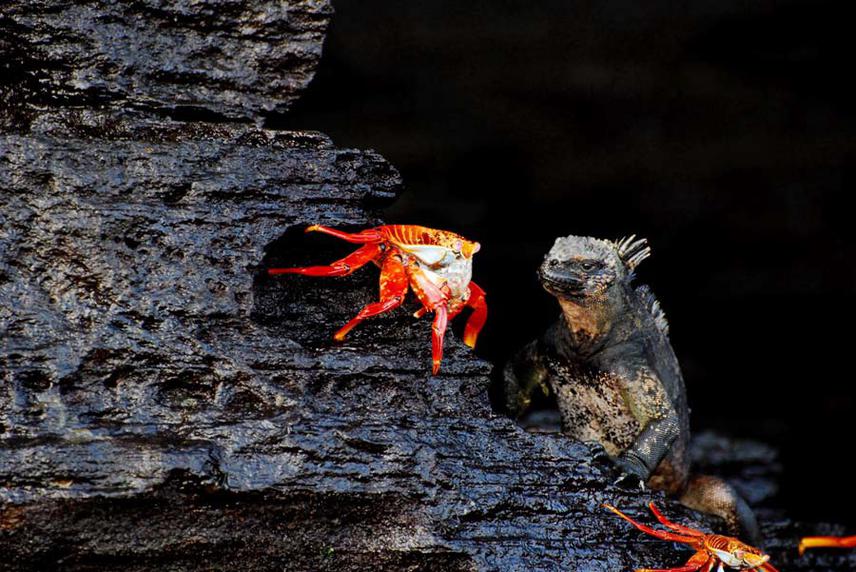Luis Vinueza
Other projects
12 Aug 2008
Conservation Ecology of Galapagos Rocky Shores in the Face of Human Disturbance and Climate Change II
This project will investigate the threats to the Galapagos Islands ecology from human intervention and climate change factors such as El Nino.

The Galápagos Islands are located at the confluence of cold nutrient rich waters (western islands), warm nutrient poor tropical waters (northern islands) and cool temperate currents (central and southern islands). Spatial and temporal differences in the strength of these oceanic currents have created discrete biogeograpic regions, each characterize by a unique array of species.
Due to the volcanic origin of the Islands, the intertidal rocky shores are well represented. This narrow sea-land interface provides food, nesting grounds and shelter to some of the most remarkable ecological and evolutionary treasures of the planet, including marine iguanas the only seagoing lizards that feed on marine algae, flightless cormorants, and penguins, among other species, many of them unique to the Archipelago. However, the Galapagos face increasing threats from anthropogenic and environmental perturbations. A growing artisanal fishery is rapidly depleting marine resources with unknown cascading impacts on the ecosystem. El Nino Southern Oscillation, a large-scale environmental perturbations characterized by elevated temperatures, low nutrient levels, high sea level and low productivity dramatically affect the survivorship of several endemic species, particularly those that strongly depend on the productive upwelling system of the Archipelago.
The impacts of these threats and the interactions between these stressors-are largely unknown, limiting our capacity to develop management strategies to protect its unique biological diversity. The conservation of the fragile ecosystems of the Galapagos strongly depends on careful management based on solid scientific foundations. I will use the dynamic oceanographic setting of the Galapgaos Islands to understand three key issues for the conservation of near-shore communities:
- investigate how upwelling modifies species interactions to influence community structure
- asses if different upwelling regimes lead to increased stability (resilience and resistance ) of marine communities in response to the interactive effects of environmental (e.g. thermal stress) and anthropogenic perturbations (species removal via fishing) and
- understand how the interactive effects of temperature and productivity will affect the growth rates, reproductive output and survivorship of basal species (i.e. algae and barnacles). My results will provide information important to the Galapagos National Park Service (GNPS) when identifying strategic locations for conservation and will elucidate the critical interactions between nutrient supply, consumer-resource interactions and climate change on marine communities.